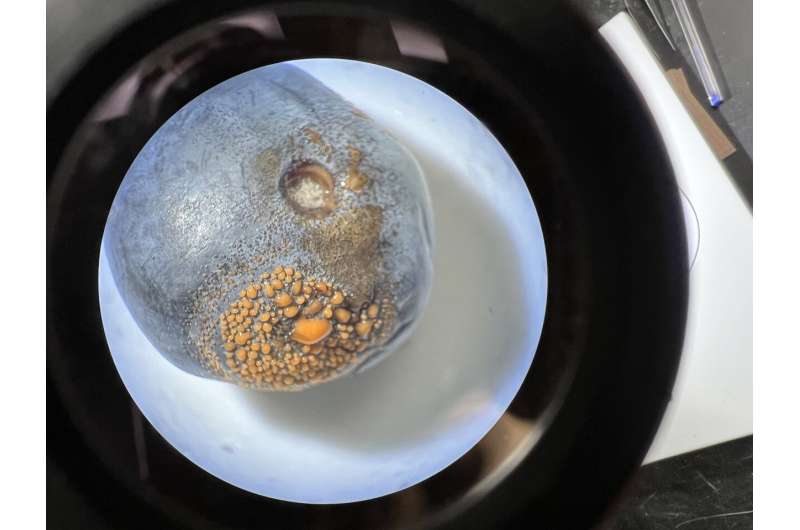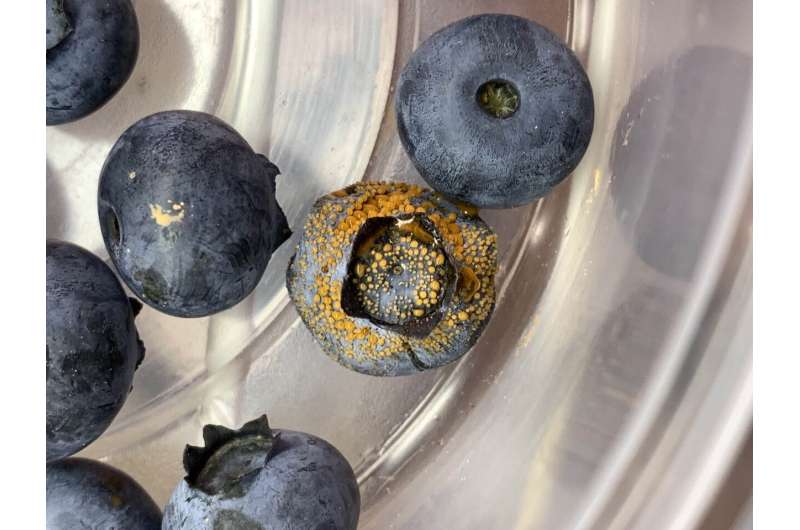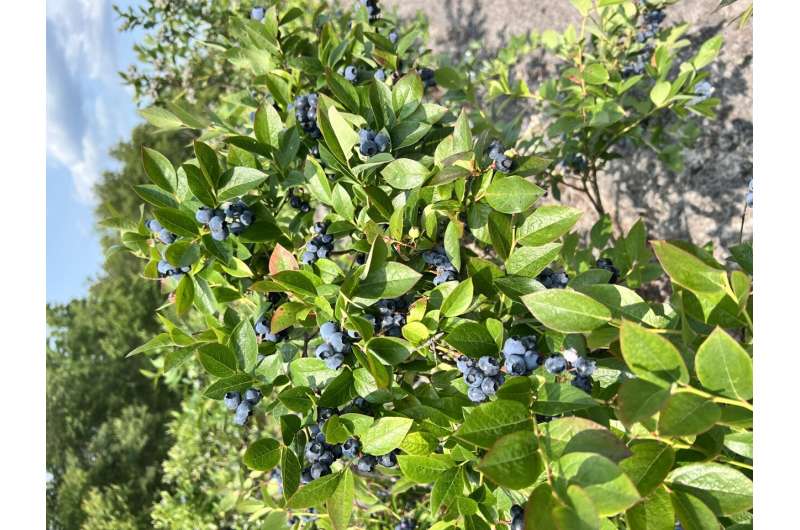This article has been reviewed according to Science X's editorial process and policies. Editors have highlighted the following attributes while ensuring the content's credibility:
fact-checked
peer-reviewed publication
proofread
Fungus versus flies: Following a scent towards insecticide-free pest management

While a blueberry with a fungal infection might end up in most people's compost bin, for a team of researchers in the US, it has provided a key to tackling the unsustainable use of insecticides.
In a new study
published in Pest Management Science, the team explored how blueberries infected with a specific fungus, Colletotrichum fioriniae, emit odors that repel spotted-wing drosophila—a fruit fly that is a destructive pest of berries and cherries. By recreating the repellent aroma from the fungus, they were able to trick the flies into perceiving healthy fruit as infected. The result? An alternative pest control method that can manipulate insect behavior and reduce insecticide use—with no
Spotted-wing drosophila (Drosophila suzukii) is a notorious pest that poses a significant threat to thin-skinned fruits, causing substantial economic losses to growers worldwide.
"D. suzukii are very difficult to control because most of their life cycle occurs inside of fruit where they are protected from chemical sprays, leaving only the flying adult insects as potential targets for insecticides," explained Caitlin Rering, from the United States Department of Agriculture, and one of the lead authors on the study.

"The flies are also capable of exponential growth once infestation begins. A single female D. suzukii can produce over 350 eggs in her lifetime, and each egg can develop into an adult in as little as 10 days," she added.
This prolific growth means farmers currently rely on aggressive pesticide use for crop protection, leading to contamination of the environment and the promotion of insecticide resistance. The work of Rering and the team therefore contributes to the urgent need for alternative approaches to manage D. suzukii.
C. fioriniae is a threat to crops in its own right. The fungus can cause rot disease, and as Rering notes, "it is certainly not an organism that farmers would want to introduce to their field." However, by analyzing the difference in odors emitted by healthy and rotting fruit, the researchers were able to identify specific volatile chemicals produced by the fungus to repel D. suzukii.

"Of all the chemicals we tested, two seem particularly potent in repelling flies: ethyl crotonate and ethyl butyrate. These are small, simple chemicals with highly similar chemical structures. In our laboratory tests, both volatiles repelled D. suzukii from foraging and laying eggs on treated fruit," Rering observed.
Rering noted that the control method exploits D. suzukii's exquisite sensitivity to the aroma from infected fruits: "To a human, the fruit in the early stages of infection that we studied look and smell completely normal. However, the flies can easily distinguish between infected and uninfected fruit, even when we can't."
The two repellents reported in the study have significant potential for application in the field, providing growers with non-toxic alternatives to traditional chemical control methods. In particular, Rering explained how the volatiles identified could be incorporated into a pest control strategy known as "push-pull" management. The natural repellent would "push" the insects away from the crop while an attractant would lure them towards a trap containing insecticide, killing the flies without spraying toxic chemicals over a vast area of crops.
"Our next steps are to begin testing the repellents in the field alone and in combination with attractants in a push-pull scenario. We started testing in the field this summer and have some very promising results so far. We also want to test if these repellents will work in other fruits infested by D. suzukii, like strawberries, cherries, and raspberries," said Rering.
More information: Caitlin C Rering et al, Blueberries infected with the fungal pathogen Colletotrichum fioriniae release odors that repel Drosophila suzukii, Pest Management Science (2023). DOI: 10.1002/ps.7692
Journal information: Pest Management Science
Provided by Society of Chemical Industry





















